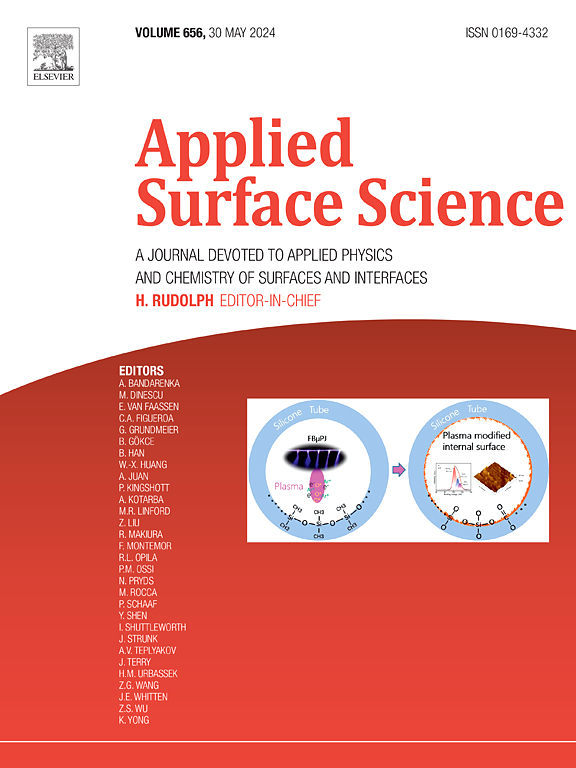Tailoring Y-doped ZnO loaded onto eco-friendly support alginate-hectorite for azo dye removal
IF 6.3
2区 材料科学
Q2 CHEMISTRY, PHYSICAL
引用次数: 0
Abstract
Yttrium-doped zinc oxide nanocomposites supported on an alginate-hectorite matrix were synthesized via an eco-friendly process and tested for the degradation of direct blue 71 and reactive black 5 azo dyes. The structural analysis confirmed a reduction in crystallite size from 34 nm in the sample with 2 % yttrium doping (ZAHY02) to 26 nm in the sample with 3 % yttrium doping (ZAHY03). Fourier-transform infrared spectroscopy revealed strong chemical interactions between the doped zinc oxide, the biopolymer, and the clay mineral. Scanning electron microscopy showed a well-dispersed morphology with smaller particle sizes in the nanocomposite doped with 3 % yttrium. Nitrogen adsorption–desorption analysis indicated a surface area of 77.4 m2/g and a pore volume of 0.179 cm3/g for the 2 % yttrium-doped nanocomposite, which decreased with higher doping levels. Optical measurements showed a narrowed band gap of 3.236 eV for the 2 % yttrium-doped sample, enhancing light absorption and photocatalytic activity. The Gaussian PL spectra deconvolution quantified VZn, VO, and VO+ structural defects. Photocatalytic experiments achieved significant efficiency, exceeding 90 % to remove direct blue 71 and 79 % for the reactive black 5 within 120 min under optimized conditions, with hydroxyl radicals identified as the primary reactive species. Stability tests confirmed the material’s high reusability, maintaining efficiency over three cycles. This study demonstrates the potential of these nanocomposites as sustainable and effective photocatalysts for wastewater treatment applications.

剪裁y掺杂ZnO负载在生态友好的海藻酸盐-海托石载体上以去除偶氮染料
采用环境友好的方法合成了海藻酸盐-海托石基负载钇掺杂氧化锌纳米复合材料,并对直接蓝71和活性黑5偶氮染料进行了降解试验。结构分析证实,晶体尺寸从掺2%钇(ZAHY02)的34 nm减小到掺3%钇(ZAHY03)的26 nm。傅里叶变换红外光谱揭示了掺杂氧化锌、生物聚合物和粘土矿物之间强烈的化学相互作用。扫描电镜显示,掺3%钇的纳米复合材料具有分散良好、粒径较小的形貌。氮吸附-解吸分析表明,掺2%钇的纳米复合材料的比表面积为77.4 m2/g,孔体积为0.179 cm3/g,随着掺量的增加,孔体积减小。光学测量表明,掺2%钇的样品带隙缩小至3.236 eV,增强了光吸收和光催化活性。高斯PL光谱反褶积量化了VZn、VO和VO+结构缺陷。光催化实验取得了显著的效率,在优化条件下,120 min内直接蓝71的去除率超过90%,活性黑5的去除率超过79%,其中羟基自由基是主要的反应物质。稳定性测试证实了该材料的高可重复使用性,在三个周期内保持效率。本研究证明了这些纳米复合材料作为可持续和有效的光催化剂在废水处理中的应用潜力。
本文章由计算机程序翻译,如有差异,请以英文原文为准。
求助全文
约1分钟内获得全文
求助全文
来源期刊

Applied Surface Science
工程技术-材料科学:膜
CiteScore
12.50
自引率
7.50%
发文量
3393
审稿时长
67 days
期刊介绍:
Applied Surface Science covers topics contributing to a better understanding of surfaces, interfaces, nanostructures and their applications. The journal is concerned with scientific research on the atomic and molecular level of material properties determined with specific surface analytical techniques and/or computational methods, as well as the processing of such structures.
 求助内容:
求助内容: 应助结果提醒方式:
应助结果提醒方式:


